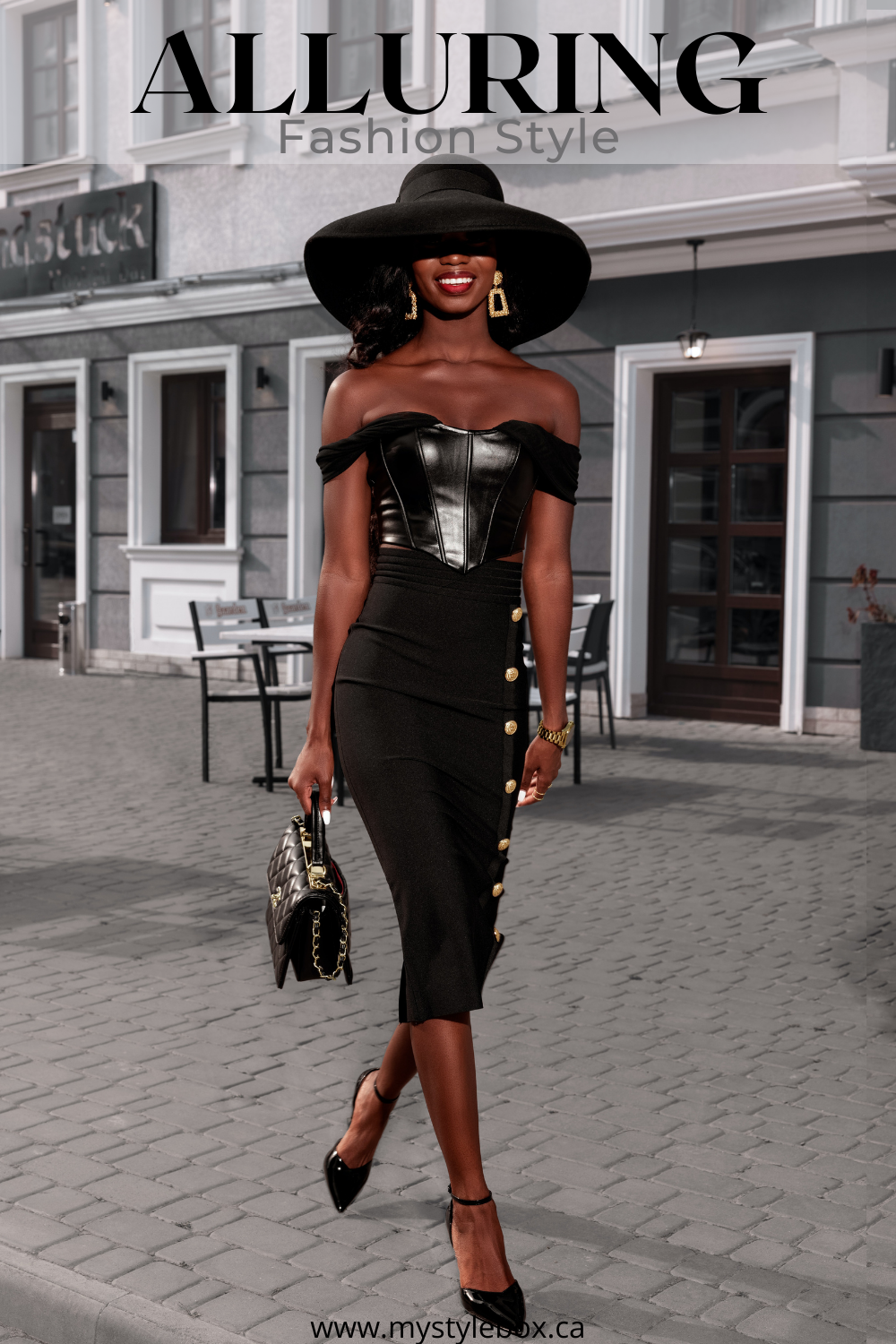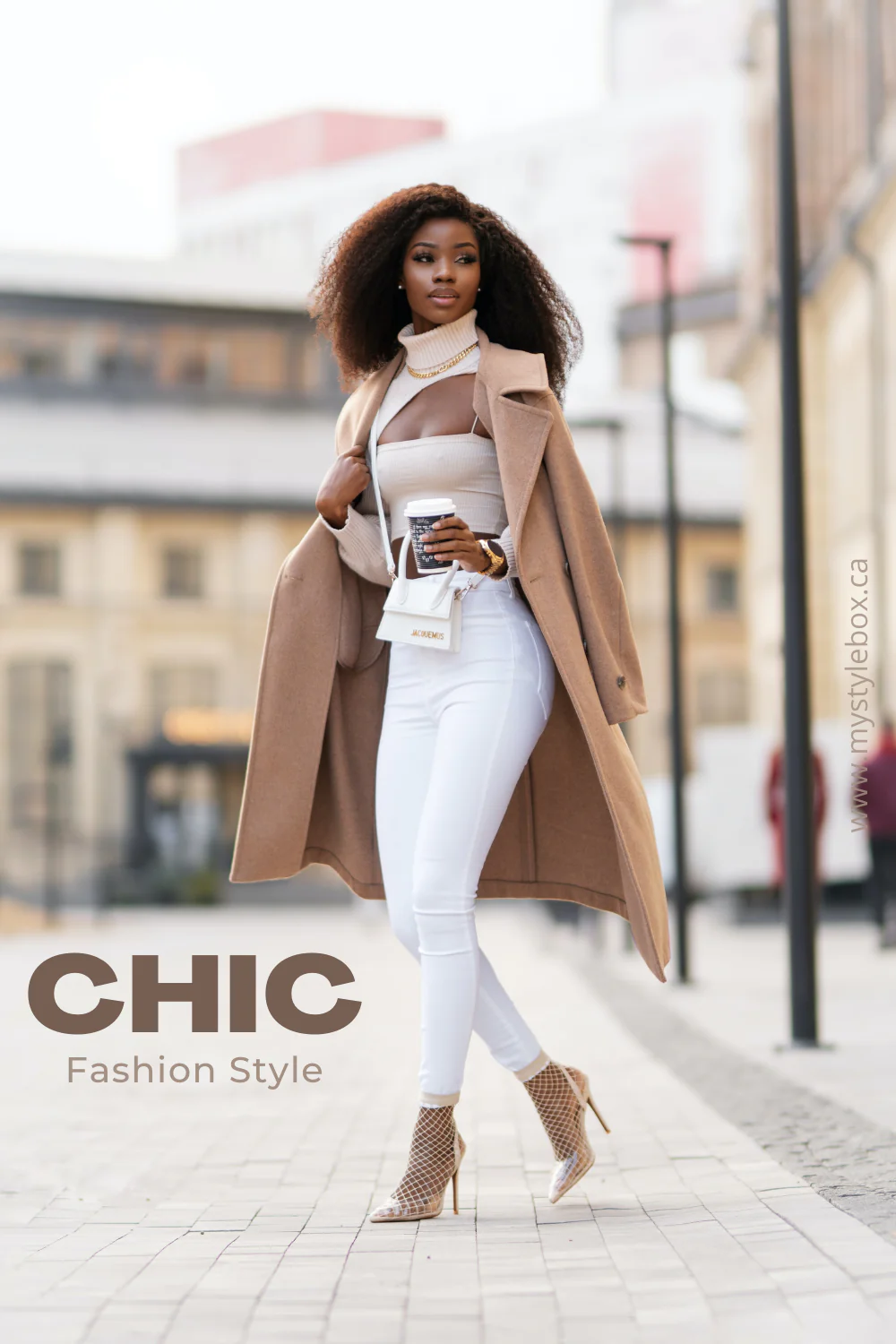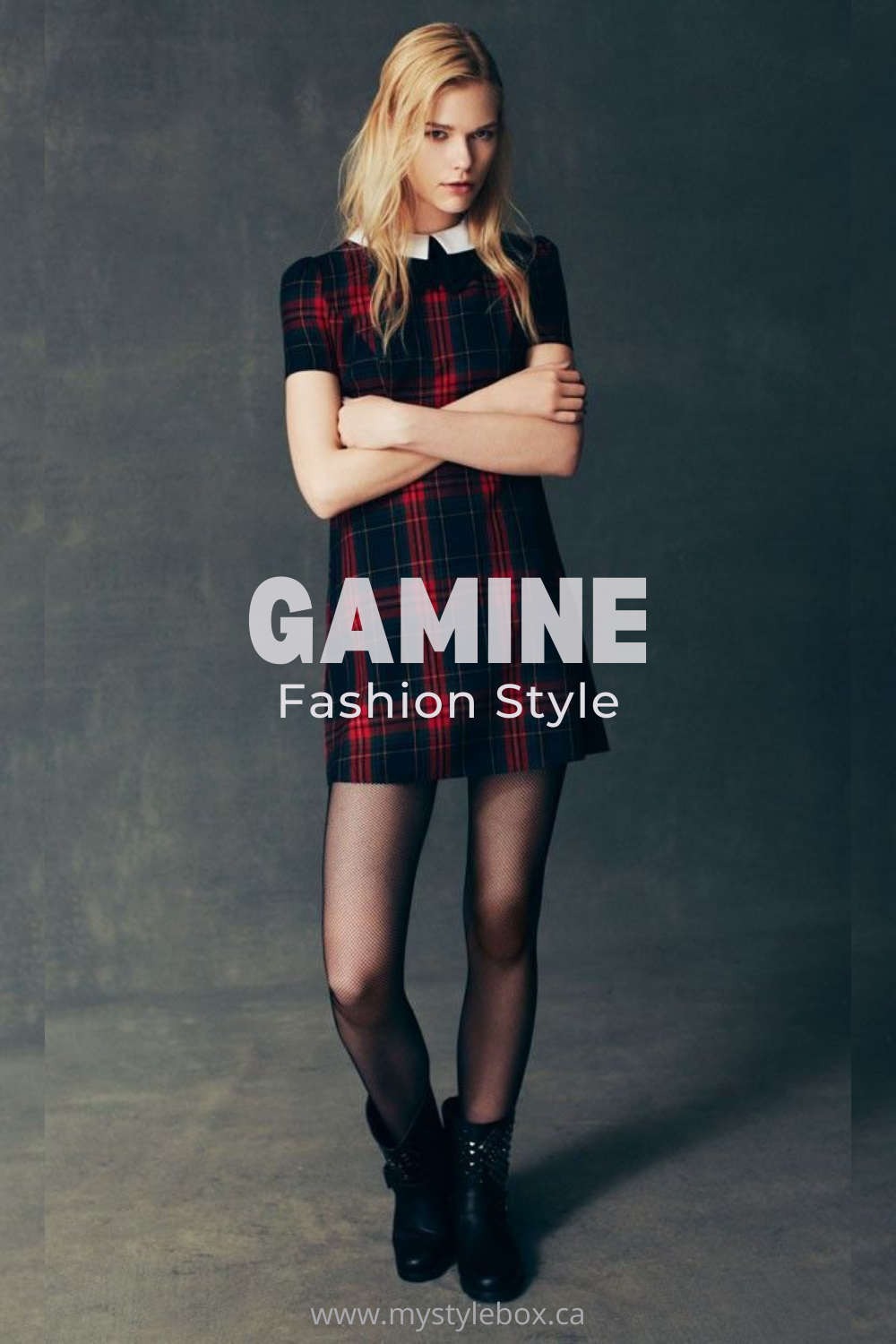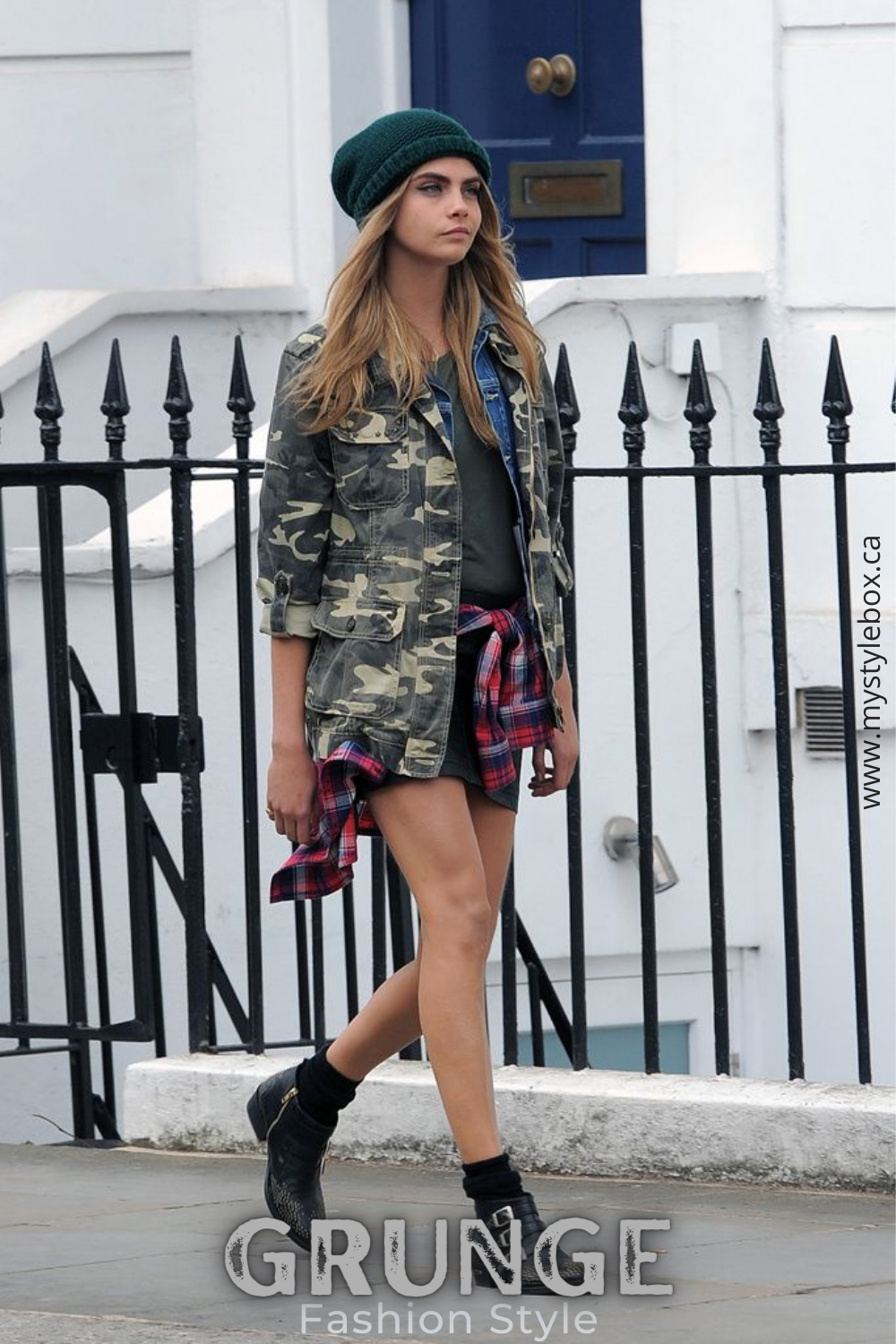1970s Fashion Style: Western Influence & Diverse Silhouettes
The 1970s continue to be one of the most stylish decades of all time because there was no predominant look. It was a bit of everything for anyone who had an opinion about fashion. The era embraced a laid-back vibe, incorporating fringe details, suede vests, and crochet textures that exuded a sense of non-conformity and individuality.
The 1970s also saw the rise of denim as a fashion staple. Bell-bottom jeans became a symbol of the decade, with their exaggerated flared legs and high-waisted designs, reflecting the era's penchant for bold statements.
Accessories played a significant role in defining the era's style. Platform shoes, large hoop earrings, aviator sunglasses, and statement belts were among the iconic accessories that complemented the diverse fashion trends.
Wrap Dresses :The wrap dress first designed by Diane von Furstenberg was a shirt dress with a ballerina wrap top, made of cotton jersey. In 1975, Furstenberg was making 15,000 wrap dresses a week for everyone from housewives to working professionals. Later, they were made available to the masses and in other materials such as cotton, chiffon, voile, and polyester.








Palazzo Pants and Bell Bottoms :Bell bottom jeans and exaggerated bell bottoms called Palazzo pants that are flowed like a skirt








Jumpsuits :They were a stretchy adaptation of overalls, made of double-knit polyester or cotton with bell bottoms. Denim versions have a zip or button up front, pant pockets, and sometimes an oversized collar.




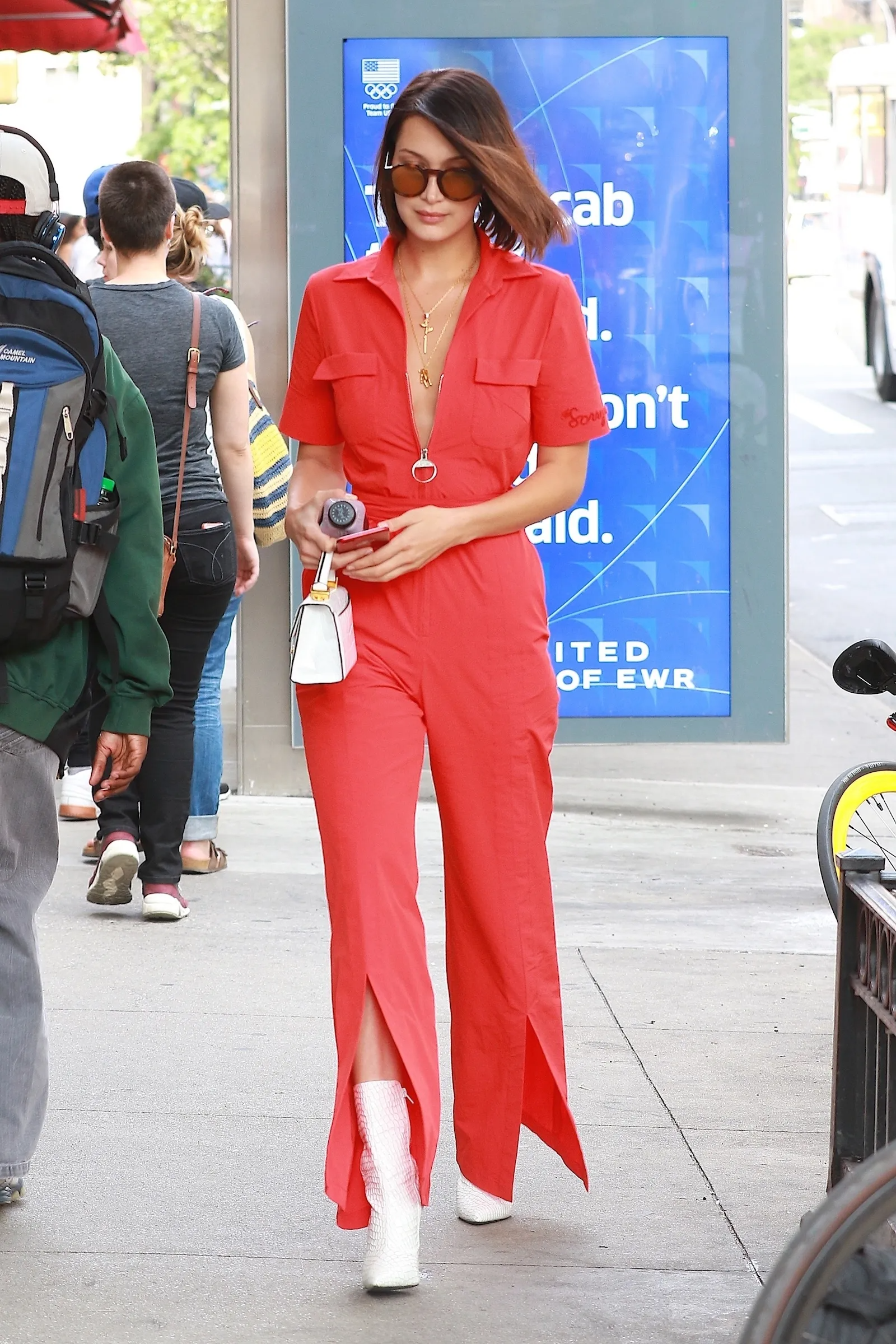


Hot Pants :They were very short shorts in bright colours of satin, cotton, nylon, denim or velvet, and were worn in all seasons



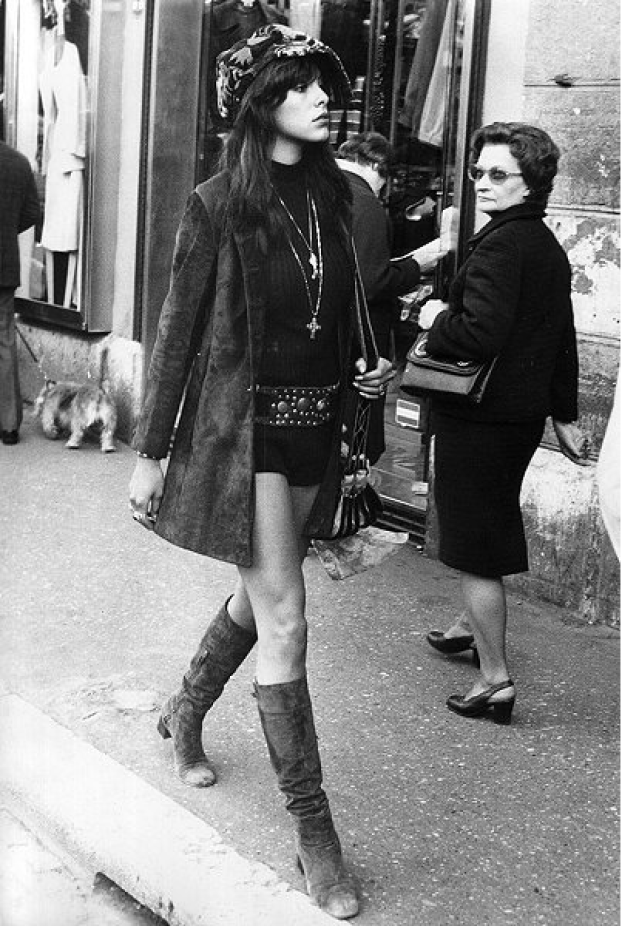




Blue Jean :Blue Jeans became the uniform of the 70s. In the early 70s, used or pre-bleached ones were popular, contrast stitching, studs, and patches were added to make them unique. By the late 70s, jeans turned dark-washed and skin-tight.








Pantsuits :Women’s fashion in the mid-to-late 1970s was dominated by suits. Man-tailored blazers were also worn over a vest and softened with pussy bow-tie blouse.








Pointed Collars :Many dresses and blouses had pointed oversized collars and some have hippie prints in yellow, green, and orange flowers or paisley swirls.


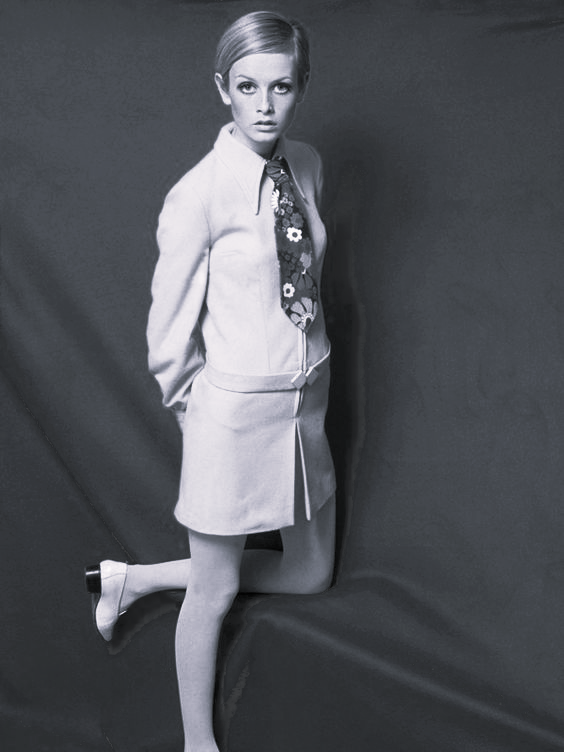
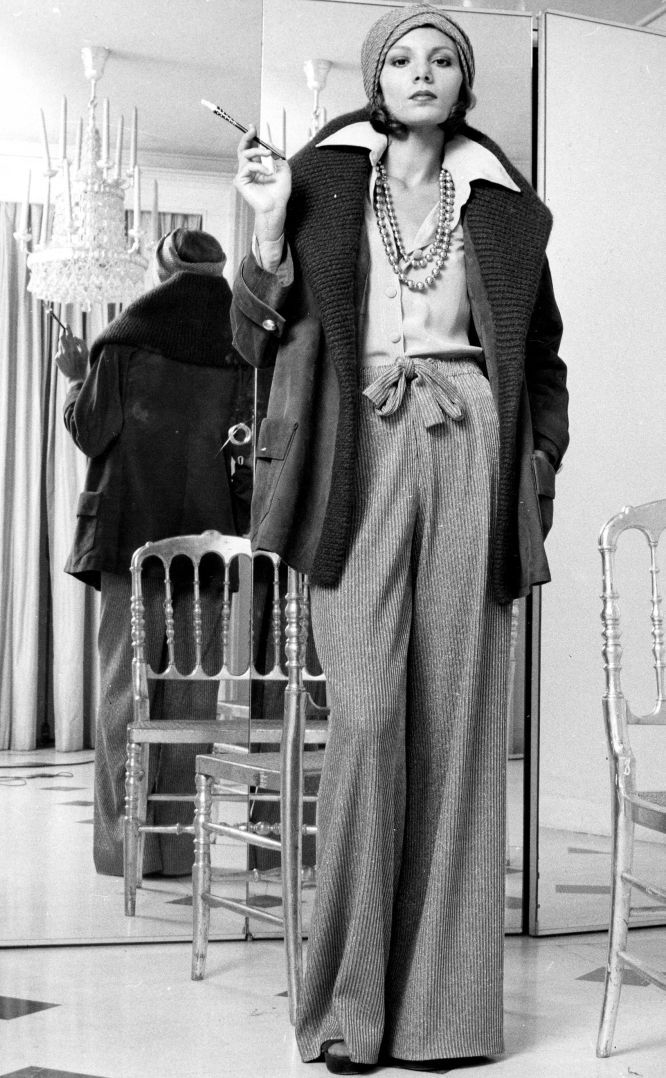




Tunic Shirts, Peasant Blouses and Bell Sleeves:They were the ultimate in comfort and often paired well with a comfortable pair of jeans and trousers or layered over pleated skirts. Bell sleeves were popular in tops and dresses.








Neck Ribbons:The necktie’s popularity is often attributed to Coco Chanel and Yves Saint Laurent though it has been a relevant garment accessory for centuries and has many different versions including neck bow, bowtie, necktie, pussy bow etc.








Belts:Belts were very popular accessories to a dress, jacket or tunic shirts as well as wide-leg jeans and pants.








Western Details:Buckskins are brown fringed jackets often accompanied by the western wear at the time, as well as bolo ties and embroidered button-ups, suede skirts, cowboy boots, cowboy hats etc.






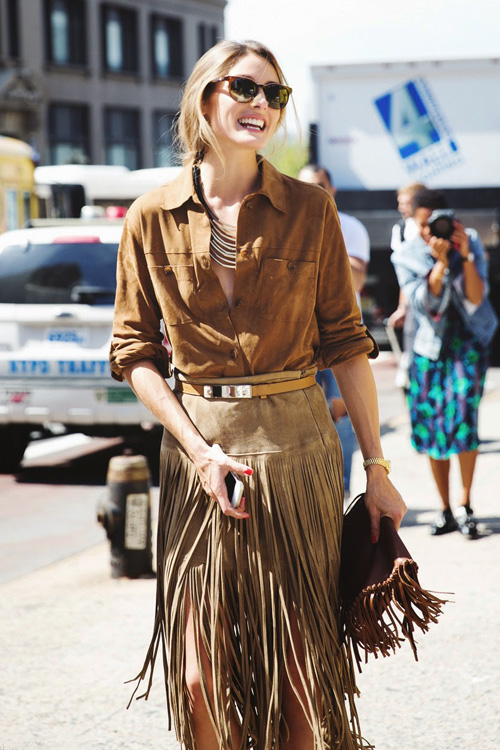

Corduroy:Corduroy was the fabric of the ‘70s, used in everything from dresses to skirts and trousers.
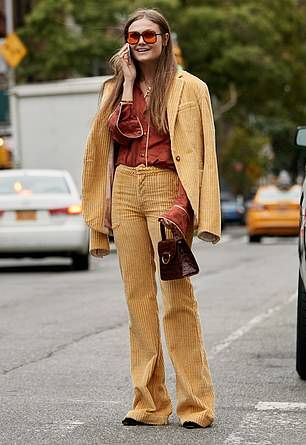



Halter Necks:Halters and crisscross halter necks (tie around the neck rather than being held up by shoulder straps)

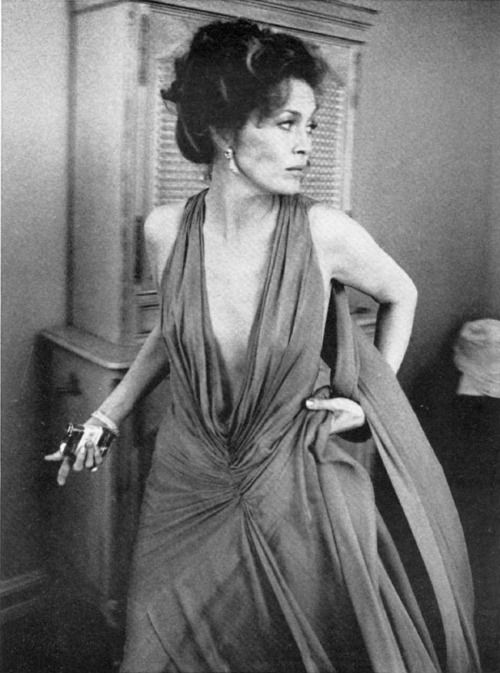






Maxi Dresses and Caftans :The granny dress, prairie dress or peasant dress was a mix of hippie and Victorian era, modesty with a touch of folk art. They were in homey prints, often trimmed in ruffles, lace, and embroidery. Caftan dresses were worn with high-heeled sandals and beaded necklaces.








Jumper/Pinafore Dresses :Sleeveless jumper dresses were worn over short or long sleeve shirts in winter with high knee socks, tights and boots.








Vests :Vests were major layering options throughout the 70s. They were layered over blouses and pants or skirts, either open and swaying or buttoned up with a belt.








Ponchos :Homemade crochet, open weave knits, folk designs and fuzzy plaid knit blanket ponchos in short and medium-long lengths were popular layers.








Patchwork :Real patchwork art in fashion made its first appearance in the 1970s.




Clogs and Gladiator Sandals :Clogs were the footwear of workers in Sweden and the Netherlands, a lifestyle romanticized by the hippies. They were heavy and bulky but easy to slip on and off, unisex, and comfortable. Gladiator sandals (with several wide cross straps holding the sole to the foot) were combined often with Bohemian outfits such as maxi dresses or mini skirts.











